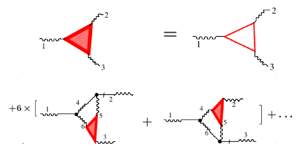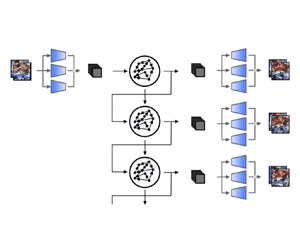Refine listing
Actions for selected content:
1418719 results in Open Access
Community Based Natural Resources Management in Botswana
-
- Journal:
- Journal of African Law / Volume 68 / Issue 1 / February 2024
- Published online by Cambridge University Press:
- 15 November 2023, pp. 59-72
- Print publication:
- February 2024
-
- Article
-
- You have access
- Open access
- HTML
- Export citation
BETWEENNESS ALGEBRAS
- Part of
-
- Journal:
- The Journal of Symbolic Logic , First View
- Published online by Cambridge University Press:
- 15 November 2023, pp. 1-25
-
- Article
-
- You have access
- Open access
- HTML
- Export citation
Energy flux and high-order statistics of hydrodynamic turbulence
-
- Journal:
- Journal of Fluid Mechanics / Volume 975 / 25 November 2023
- Published online by Cambridge University Press:
- 15 November 2023, A17
-
- Article
- Export citation
In memoriam: Roger D. Masters (1933–2023)
-
- Journal:
- Politics and the Life Sciences / Volume 42 / Issue 2 / Fall 2023
- Published online by Cambridge University Press:
- 15 November 2023, pp. 322-323
-
- Article
-
- You have access
- HTML
- Export citation
Predicting turbulent dynamics with the convolutional autoencoder echo state network
-
- Journal:
- Journal of Fluid Mechanics / Volume 975 / 25 November 2023
- Published online by Cambridge University Press:
- 15 November 2023, A2
-
- Article
-
- You have access
- Open access
- HTML
- Export citation
Mechanical actuation via resorbable materials
- Part of
-
- Article
- Export citation
Theory Choice as Niche Construction: The Feedback Loop between Scientific Theories and Epistemic Values
-
- Journal:
- Philosophy of Science / Volume 91 / Issue 3 / July 2024
- Published online by Cambridge University Press:
- 15 November 2023, pp. 741-758
- Print publication:
- July 2024
-
- Article
-
- You have access
- Open access
- HTML
- Export citation
On Stephen Houlgate's Hegel on Being
-
- Journal:
- Hegel Bulletin / Volume 44 / Issue 3 / December 2023
- Published online by Cambridge University Press:
- 15 November 2023, pp. 492-502
- Print publication:
- December 2023
-
- Article
- Export citation
Deception as Mimicry
-
- Journal:
- Philosophy of Science / Volume 91 / Issue 2 / April 2024
- Published online by Cambridge University Press:
- 15 November 2023, pp. 370-389
- Print publication:
- April 2024
-
- Article
-
- You have access
- Open access
- HTML
- Export citation
Time Variation in the News–Returns Relationship
-
- Journal:
- Journal of Financial and Quantitative Analysis / Volume 60 / Issue 1 / February 2025
- Published online by Cambridge University Press:
- 15 November 2023, pp. 258-294
- Print publication:
- February 2025
-
- Article
-
- You have access
- Open access
- Export citation
Dispersion effects in porous medium gravity currents experiencing local drainage
-
- Journal:
- Journal of Fluid Mechanics / Volume 975 / 25 November 2023
- Published online by Cambridge University Press:
- 14 November 2023, A18
-
- Article
-
- You have access
- Open access
- HTML
- Export citation
ISOMETRIES AND HERMITIAN OPERATORS ON SPACES OF VECTOR-VALUED LIPSCHITZ MAPS
- Part of
-
- Journal:
- Journal of the Institute of Mathematics of Jussieu / Volume 23 / Issue 4 / July 2024
- Published online by Cambridge University Press:
- 14 November 2023, pp. 1857-1874
- Print publication:
- July 2024
-
- Article
-
- You have access
- Open access
- HTML
- Export citation
Spanning trees in graphs without large bipartite holes
- Part of
-
- Journal:
- Combinatorics, Probability and Computing / Volume 33 / Issue 3 / May 2024
- Published online by Cambridge University Press:
- 14 November 2023, pp. 270-285
-
- Article
-
- You have access
- HTML
- Export citation
ON MODEL-THEORETIC CONNECTED GROUPS
- Part of
-
- Journal:
- The Journal of Symbolic Logic / Volume 89 / Issue 1 / March 2024
- Published online by Cambridge University Press:
- 14 November 2023, pp. 50-79
- Print publication:
- March 2024
-
- Article
-
- You have access
- Open access
- HTML
- Export citation
Constructing Birkhoff sections for pseudo-Anosov flows with controlled complexity
- Part of
-
- Journal:
- Ergodic Theory and Dynamical Systems / Volume 44 / Issue 8 / August 2024
- Published online by Cambridge University Press:
- 14 November 2023, pp. 2308-2360
- Print publication:
- August 2024
-
- Article
-
- You have access
- Open access
- HTML
- Export citation
Gypsophily in tropical environments: a case study in the Yucatan Peninsula
-
- Journal:
- Journal of Tropical Ecology / Volume 39 / 2023
- Published online by Cambridge University Press:
- 14 November 2023, e40
-
- Article
- Export citation
Longitudinal trends in 30-day mortality attributable to SARS-CoV-2 among vaccinated and unvaccinated US veteran patients
-
- Journal:
- Infection Control & Hospital Epidemiology / Volume 45 / Issue 3 / March 2024
- Published online by Cambridge University Press:
- 14 November 2023, pp. 393-395
- Print publication:
- March 2024
-
- Article
- Export citation
Tangle equations, the Jones conjecture, slopes of surfaces in tangle complements, and q-deformed rationals
-
- Journal:
- Canadian Journal of Mathematics / Volume 76 / Issue 2 / April 2024
- Published online by Cambridge University Press:
- 14 November 2023, pp. 707-727
- Print publication:
- April 2024
-
- Article
-
- You have access
- Open access
- HTML
- Export citation
What do patients want from therapy? Understanding treatment goals of patients with long-term conditions referred for cognitive behavioural therapy in primary care
-
- Journal:
- The Cognitive Behaviour Therapist / Volume 16 / 2023
- Published online by Cambridge University Press:
- 14 November 2023, e32
-
- Article
- Export citation





























